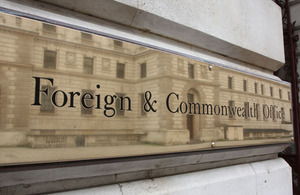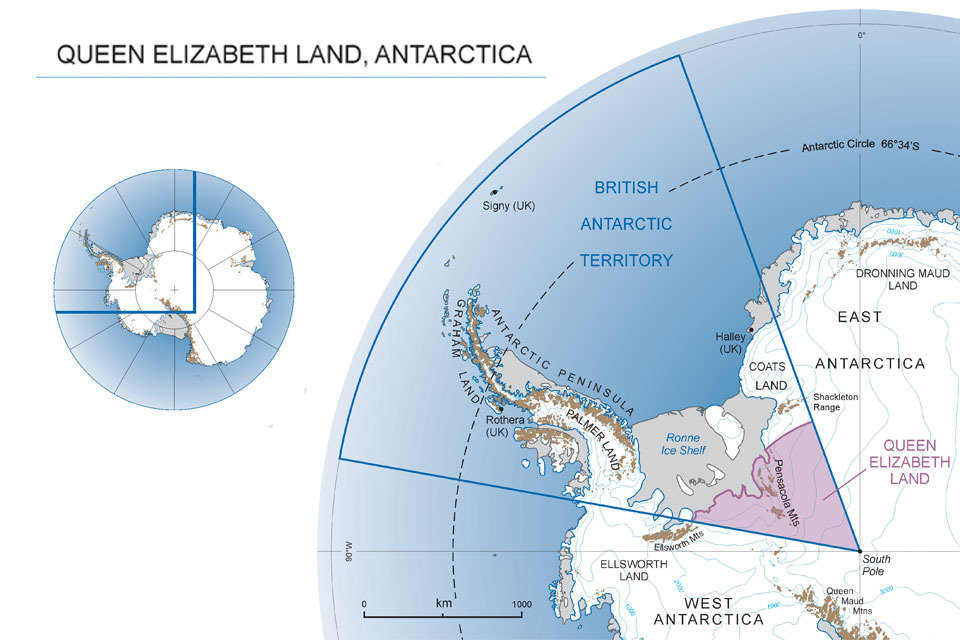Queen Elizabeth Land
The Foreign Secretary has announced that the southern part of British Antarctic Territory has been named Queen Elizabeth Land.

Foreign Office
Her Majesty The Queen visited the Foreign & Commonwealth Office for the second time today, as the last official engagement of her Diamond Jubilee year. Her Majesty’s previous visit was in 1982 to mark the department’s bicentenary.
Following a tour of the building, Foreign Secretary William Hague announced that the southern part of the British Antarctic Territory had been named ‘Queen Elizabeth Land’ in honour of The Queen’s sixtieth year on the throne.
The Foreign Secretary said:
As a mark of this country’s gratitude to The Queen for Her service, we are naming a part of the British Antarctic Territory in her honour as ‘Queen Elizabeth Land’.
This is a fitting tribute at the end of Her Majesty’s Diamond Jubilee year, and I am very proud to be able to announce it as she visits the Foreign and Commonwealth Office.
The British Antarctic Territory is a unique and important member of the network of fourteen UK Overseas Territories. To be able to recognise the UK’s commitment to Antarctica with a permanent association with Her Majesty is a great honour.
The area now to be known as Queen Elizabeth Land, which was previously unnamed, is around 169,000 square miles (437,000 sq km), making up just under a third of the whole land mass of the British Antarctic Territory. This is almost twice the size of the UK, which stands at 94,000 square miles (244,000 sq km).
Queen Elizabeth Land is bounded on the North side by the Ronne and Filchner ice shelves, to the North East by Coats Land, on the East by Dronning Maud Land and extending on the West side to a line between the South Pole and Rutford Ice Stream, east of Constellation Inlet.
Her Majesty The Queen has been on the throne for 60 of the 104 years since the UK claimed territory in Antarctica in 1908. This includes the entire time it has been known as the British Antarctic Territory.

Queen Elizabeth Land
Further Information
- The British Antarctic Territory (BAT) extends from 20⁰ to 80⁰ West. It was claimed by the UK in 1908 and was the first official claim in Antarctica. It was designated officially as a separate Overseas Territory in 1962.
- All claims to territory within Antarctica are held in abeyance under Article IV of the Antarctic Treaty, 1959, which neither confirms nor denies competing claims, but prevents new claims being made.
- The name Queen Elizabeth Land will now be used on all British maps. Because of the unique status of Antarctica, which is covered by an international Treaty that suspends territorial sovereignty, it is for other countries to decide whether or not they will officially recognise this name.
- Place naming in BAT is undertaken on the basis that a currently unnamed area requires a name for scientific or logistical purposes. This approach is fully in line with the Antarctic Treaty.
- Decisions on names are made by the Commissioner of the British Antarctic Territory, who is based in London. The Commissioner takes advice on new names from the Antarctic Place Names Committee, which meets twice a year.
- The BAT has no permanent population. British presence is maintained via three research stations operated by the British Antarctic Survey. The Territory itself is self-financing, investing modest receipts from stamp sales and the income tax from overwintering British scientists in environmental projects.
- This is not the first time that land in Antarctica has been named after The Queen. Princess Elizabeth Land in East Antarctica, which was discovered in 1931 by the Australian Sir Douglas Mawson, was named by him after Her Royal Highness Princess Elizabeth (now Her Majesty Queen Elizabeth II). And in 2006, an unnamed mountain range in the Antarctic Peninsula was named The Princess Royal Range, in recognition of Her Royal Highness’s work to support environmental and heritage protection work in Antarctica.
Read the Foreign Secretary’s speech welcoming Her Majesty Queen Elizabeth II
More information on supporting the Overseas Territories